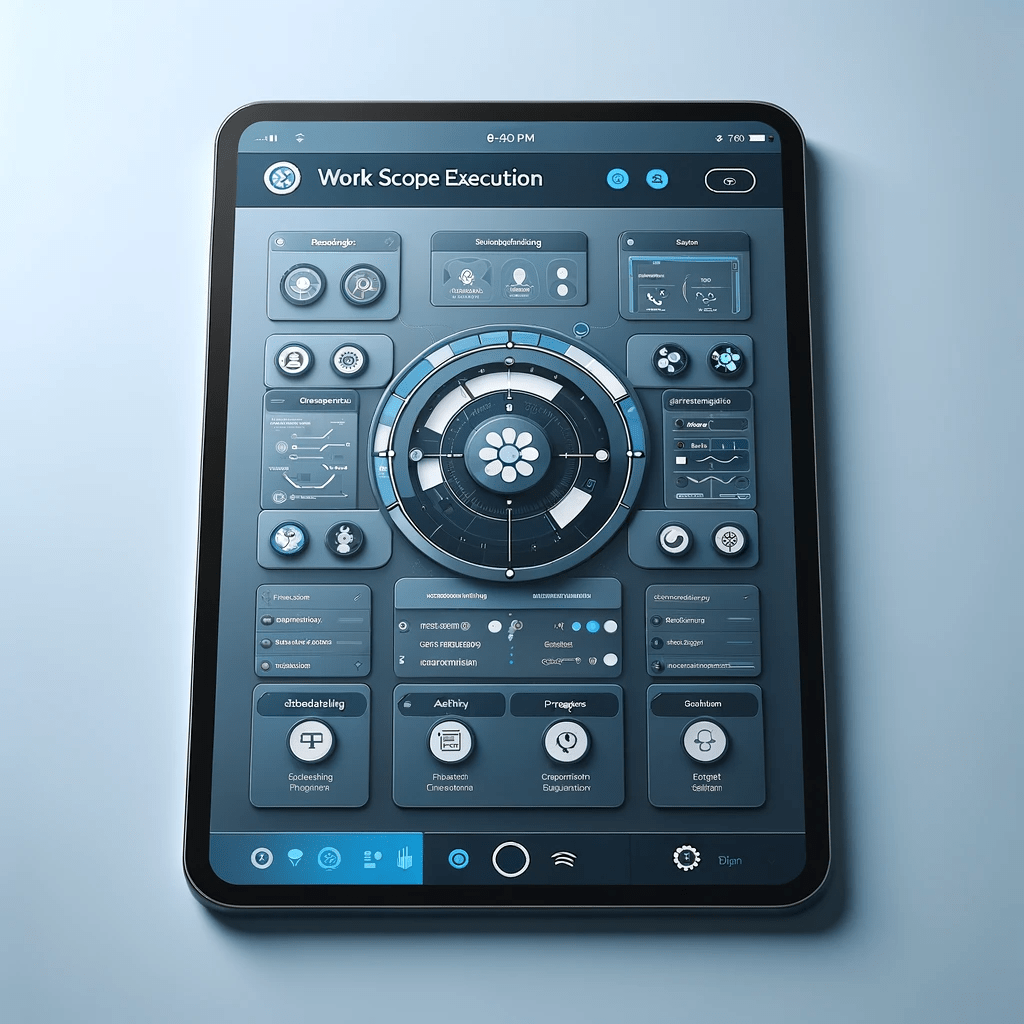

A modern and comprehensive cloud based Asset Integrity Management System (AIMS) platform that can be deployed in lightening speed. The primary objective of α-phe AIMS is to deliver Asset Integrity Software System that is best in class, customized to meet the company’s AIMS requirement and one that is their very own.
Key benefits:
- One corporate system for all upstream and downstream assets providing common understanding across all businesses;
- α-Phe AIMS software system is holistic in approach using next generation technology;
- Significantly reduce cost associated in maintaining fragmented systems;
- A complete system with Asset Integrity solution for every asset class and associated equipment;
- AIMS methodologies and assessment routines built on the lat-est codes, standards, industry guidelines and best practices, in-cluding ISO 55000;
- Improve work processes to achieve optimum work efficiency;
- Improve communication between departments;
- Improve efficiency by eliminating duplication of work.
The purpose of an α-phe AIMS is to ensure that an asset will perform its required functions effectively and efficiently whilst maintaining asset value and protecting people, the environment and company reputation. It should define the people, systems, process-es, and resources that are required to maintain asset integrity, and to ensure that they are in place, are correctly utilized and will per-form when required over the whole life cycle of the asset.
The AIMS workflow above depicts a continuous feedback loop adopting the Plan, Do, Check, Act (PDCA) approach. It also identifies how the AIMS will handle the integrity management objective of the Company.
Each element in the work process represents an individual module within the AIMS Software.
Asset Management / Hierarchy Module

The Asset Management module is a pivotal component of this software system, playing a crucial role in its core functionality. Its primary function is to oversee the company’s assets, simplifying both management and tracking of their maintenance needs. This module offers flexibility in handling asset data, allowing for manual entry, uploading from Excel files, or seamless synchronization with Computerized Maintenance Management Systems (CMMS) such as SAP, MAXIMO, and others. This versatility ensures efficient and effective asset management within the organization.
Preventative Maintenance Module

This module will allow the assets to be put into a regular maintenance plan based on the maintenance strategy of time based, risk based and condition based for each equipment’s. Analytical Modules such as RBI, RCM and SIL will influence the inspection method and inspection frequency, details and next due dates as risk based strategies. Manages all maintenance strategies and will automatically raise work orders in CMMS systems. A CMMS (SAP / Maximo/ and others) integration facility is available to download all the PM work orders and update back the updated PM. This module will have activities associated with each maintenance strategy. The Module will also track the progress of each activity. Software allows optimizing the tasks in Preventative Maintenance.
Work Pack Management

This module is designed to support the management of work scope requirements, including their preparation, execution, and the gathering and preservation of historical data for subsequent analysis and trend identification. It will generate a work pack number to monitor the progress of the work package throughout its entire life-cycle. Additionally, the implementation of a “traffic light” system, based on the due date of the work package, will aid the company in ensuring that both contractors and the integrity team are effectively managing the work within the established Key Performance Indicator (KPI) boundaries.
Work Scope Preparation

This module is designed to streamline the creation of work packs for on-stream, shutdown, visual, ad-hoc inspections, and regular monitoring tasks. It enables the printing of essential documents such as drawings, data sheets, and checklists, which are crucial for inspection preparation. Recognizing the importance of pre-inspection preparations for ensuring a smooth execution process, the software provides functionality to print all necessary drawings and fundamental inspection requirements.
Inspection Execution Management

After the work scope is established, it can be exported to MS Excel files or loaded onto data logger machines for field execution. The Execution Management Module is responsible for daily data collection and its validation for quality assurance and quality control (QA/QC) purposes. The software is equipped to interface with data logger machines, facilitating the creation of work scopes for execution. Once validated, this data is transferred to a Monitored data storage system, where it is used for historical trend analysis and incorporated into various analytical calculations.
Anomaly Management

The data gathered from inspections undergoes screening for any irregularities. Using ASME and API codes, integrity engineers can evaluate these anomalies. This module is equipped to store assessments, external documents, and inspection details. It enables the logging of damage modes and condition codes linked to each anomaly. Inspection engineers have the capability to monitor these anomalies from identification through to their resolution and closure.
Recommendation Management

When anomalies are detected, recommendations will either be generated automatically from the recommendation library or manually suggested by the inspection engineer, drawing on their experience. In cases where maintenance work orders are required for repairs or replacements, the AIMS software will integrate with systems like SAP/MAXIMO to initiate these work orders. This integration ensures a bi-directional link for the seamless exchange of data.
Monitored Data

It’s essential to document all data related to preventive and corrective maintenance activities for subsequent analysis. The insights gained from these analyses are crucial for refining and updating the maintenance strategies, ensuring the asset’s safe and efficient operation. Additionally, this data is inputted into the Risk-Based Module for a more comprehensive risk assessment. This module is responsible for recording various monitored data, including wall thickness measurements, corrosion coupons, corrosion probes, Inline Inspection (ILI) data, cathodic protection details, and other inspection-related information.
Request For Free Demo / Quote
Schedule a 30 minute to 1hr call
In the 30-minute to 1hr call we will demonstrate the software and explain the concept around AIMS software, we will clarify all the queries you may have. The demo will be scheduled over Microsoft Teams. The link to connect will be provided after reviewing the submission of the request for free demo form below.
